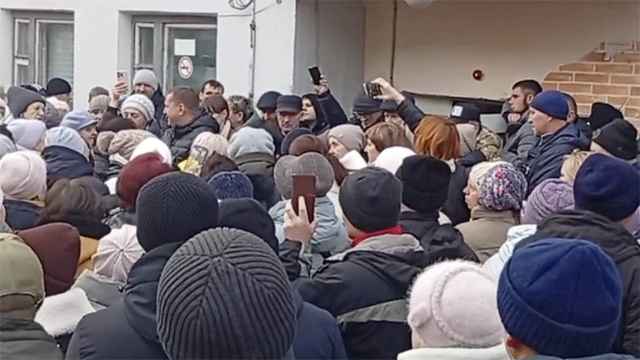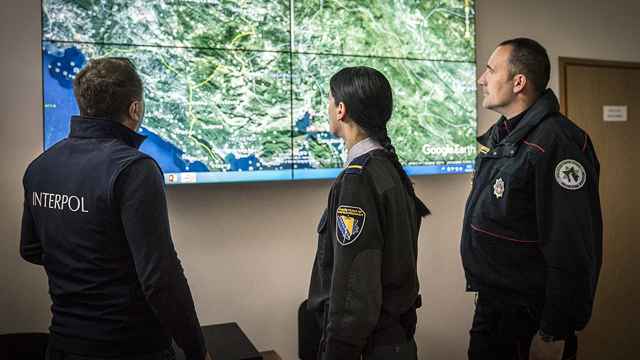Fall 1991 saw U.S. and Soviet leaders display goodwill by pledging to unilaterally consolidate and reduce their nations' arsenals of tactical nuclear weapons in what became the last milestone in the history of U.S.-Soviet arms control. In January 1992, President Boris Yeltsin didn't only confirm earlier pledges but expanded them. Twenty years after, however, the two countries still have thousands of tactical nuclear weapons outside any of the existing international arms control regimes.
Given the scarcity of benefits and abundance of costs of these arsenals, Moscow should join Washington in negotiating measures to bring tactical nukes into the realm of bilateral arms control. The two powers can start with defining the weapons and exchanging information on their past reductions and current stockpiles. They could then negotiate the verifiable reduction of their stockpiles and their consolidation in one or two of the best-guarded facilities.
A number of obstacles have prevented Moscow and Washington from concluding a tactical nuclear weapons treaty, including difficulties in establishing effective accounting and verification procedures, ambiguity of dual-use delivery systems and lack of a common definition of such weapons. Asymmetry in U.S. and Russian tactical arsenals has been another major stumbling block. Russia is currently estimated to have an active stockpile of some 2,000 warheads, while the United States is believed to have about 500.
There is a reason for such asymmetry. While the U.S. Joint Chiefs of Staff see no role for U.S. tactical nuclear weapons in Europe that cannot be performed by either strategic nuclear forces or conventional forces, Russia's General Staff sees a number of utilities in maintaining a formidable number of these devices, both west and east of the Urals.
Russia's strategic documents provide for nuclear weapons to serve as a deterrent against other nuclear states and to respond to large-scale aggression "when the very existence of the state is threatened." These weapons are also expected to compensate for the weakness of the nation's conventional forces vis-a-vis NATO and China.
Given such a range of perceived roles, it should come as no surprise that the Russian military-political leadership is reluctant to negotiate a tactical weapons treaty, making it conditional on a number of other issues, including constraints on U.S. missile defense systems.
But can tactical nuclear weapons really play all the roles that Russian strategists assign to them?
Some of these roles are unrealistic, while others can be achieved solely by strategic nuclear weapons, such as deterrence and offsetting conventional force weaknesses.
The role of de-escalating a conventional conflict would look credible if we imagine that the foe is a conventional power. But it would appear disputable if Russia were to fight a nuclear power. Rather than interpret the selective use of tactical weapons by Russia as a de-escalation signal, the nuclear foe in the fog of war may mistake it for the beginning of an all-out nuclear assault and choose to retaliate with its own nuclear weapons.
Of course, it is the Russian military's duty to plan for worst-case scenarios. But Russian generals can cut their tactical nuclear arsenal to the low hundreds and still have more than enough for any combination of contingencies, especially given the size of Russia's strategic arsenal.
While lacking realistic roles, tactical nuclear weapons incur a number of real risks and costs. Because of their relatively low yield, they are more likely than strategic nuclear weapons to be used in a war, which increases the likelihood of the conflict escalating into an all-out nuclear war. Older tactical nuclear devices are more vulnerable to unauthorized use. And these weapons help keep Russia and NATO entrenched in a military standoff that makes little sense 20 years after the end of the Cold War.
It is time that Russia and United States move away from deterrence based on a 20th-century concept of mutually assured destruction. Instead, they should move toward what experts on both sides have referred to as mutually assured stability. Consolidation and reduction of tactical nuclear weapons will facilitate this transition, advancing both countries' common vital interests in preventing the use of nuclear weapons. These measures will also allow Moscow to allocate more funds to building conventional forces capable of countering more imminent threats to Russia's security, such as a low-intensity insurgency or local conflicts, without risking a nuclear Armageddon.
Simon Saradzhyan is a research fellow at Harvard University's Belfer Center.
A Message from The Moscow Times:
Dear readers,
We are facing unprecedented challenges. Russia's Prosecutor General's Office has designated The Moscow Times as an "undesirable" organization, criminalizing our work and putting our staff at risk of prosecution. This follows our earlier unjust labeling as a "foreign agent."
These actions are direct attempts to silence independent journalism in Russia. The authorities claim our work "discredits the decisions of the Russian leadership." We see things differently: we strive to provide accurate, unbiased reporting on Russia.
We, the journalists of The Moscow Times, refuse to be silenced. But to continue our work, we need your help.
Your support, no matter how small, makes a world of difference. If you can, please support us monthly starting from just $2. It's quick to set up, and every contribution makes a significant impact.
By supporting The Moscow Times, you're defending open, independent journalism in the face of repression. Thank you for standing with us.
Remind me later.







